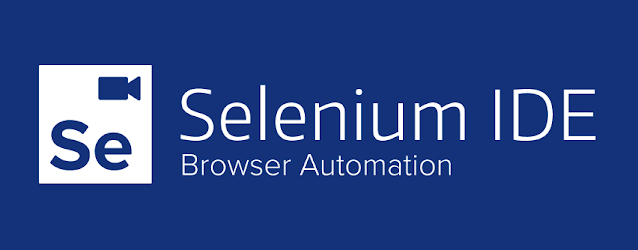Prompt Engineering 101: Master LLMs Like ChatGPT & Claude
With the rapid evolution of AI technology, large language models (LLMs) like ChatGPT and Claude have become essential tools across industries. These models are highly versatile, capable of assisting in everything from content creation to complex problem-solving. The key to harnessing their power lies in prompt engineering—the process of crafting inputs that guide the AI to produce desired outputs. This article delves deeper into the art and science of prompt engineering, offering actionable insights, techniques, tools, and applications.
Understanding Prompt Engineering
What Is Prompt Engineering?
Prompt engineering involves designing precise and effective instructions (prompts) to optimize the output of LLMs. A well-constructed prompt acts as a guide, steering the AI to perform specific tasks accurately and efficiently.
Why Is Prompt Engineering Important?
-
Efficiency: Reduces the need for multiple iterations by achieving accurate results quickly.
-
Customization: Allows tailoring responses to specific needs, from tone and structure to content scope.
-
Unlocking Potential: Enables LLMs to perform a vast range of tasks, including generating creative ideas, coding, and offering strategic insights.
Core Principles of Prompt Engineering
1. Clarity Is Key
Avoid ambiguity by crafting clear and concise prompts. The more specific you are, the better the model will understand and deliver results.
-
Ambiguous Prompt: "Tell me about history."
-
Clear Prompt: "Provide a 200-word summary of the French Revolution, focusing on its causes and outcomes."
2. Context Matters
Provide sufficient background information or instructions to help the model understand the task.
-
Without Context: "Explain machine learning."
-
With Context: "Explain machine learning to a 12-year-old in simple terms with examples."
3. Leverage Constraints
Incorporating constraints like word limits, tone, or format ensures responses align with expectations.
-
Example: "Write a professional email to a client explaining a delay in product delivery in 150 words."
4. Experimentation and Iteration
The first prompt may not always yield the best results. Experiment with variations and refine your approach to achieve optimal outcomes.
Advanced Techniques in Prompt Engineering
1. Chain of Thought Prompting
Encourage the model to reason step-by-step for tasks that require logical thinking.
-
Prompt: "Explain the steps to solve the quadratic equation x² - 4x + 3 = 0. Break it down into simple steps."
This approach helps the model generate structured, comprehensive answers.
2. Few-Shot Prompting
Provide a few examples within the prompt to illustrate the desired format or style.
-
Prompt:
"Convert these active sentences into passive voice:-
The team completed the project. -> The project was completed by the team.
-
The chef cooked the meal. -> The meal was cooked by the chef.
Now, convert: The artist painted the portrait."
-
3. Zero-Shot Prompting
For straightforward tasks, use direct instructions without examples.
-
Prompt: "List 5 benefits of remote work."
4. Multi-Turn Conversations
Use iterative interactions to refine responses, simulating a dialogue to clarify and improve output.
-
Example:
-
User: "Summarize the benefits of renewable energy."
-
AI: Response.
-
User: "Can you elaborate on the environmental benefits specifically?"
-
5. Role-Specific Prompts
Assign a role to the AI for more contextual and focused responses.
-
Prompt: "You are a travel agent. Plan a 7-day itinerary for a family visiting Paris, including cultural landmarks and kid-friendly activities."
Popular Tools for Prompt Engineering
1. OpenAI Playground
Experiment with GPT models in a user-friendly interface to refine prompts and test their effectiveness.
2. Hugging Face
Explore and interact with various LLMs, offering an ecosystem for prompt experimentation.
3. LangChain
A framework for developing advanced applications with LLMs, enabling seamless integration of prompt engineering techniques.
4. Notion AI & Jasper
Commercial tools that integrate LLMs for content creation, allowing users to explore prompt engineering in real-world scenarios.
Real-World Applications of Prompt Engineering
1. Content Creation
Generate articles, marketing copy, or social media posts tailored to specific audiences.
-
Example: "Write a LinkedIn post promoting a webinar on AI ethics."
2. Education
Create study materials, quizzes, or simplified explanations of complex topics.
-
Example: "Generate 10 multiple-choice questions about World War II for high school students."
3. Software Development
Streamline coding tasks such as debugging, code suggestions, or explanations.
-
Example: "Write a Python script to sort a list of numbers in ascending order."
4. Business Applications
Develop strategies, draft business emails, or analyze customer feedback.
-
Example: "Analyze this customer feedback and provide a summary of common complaints."
Common Challenges in Prompt Engineering
1. Vague Prompts
Unclear instructions lead to irrelevant or generic responses.
-
Solution: Always include details about the task, expected format, and desired outcomes.
2. Overfitting Prompts
Highly specific prompts may work for one task but fail in broader contexts.
-
Solution: Balance specificity with flexibility to ensure versatility.
3. Bias in Outputs
LLMs may reflect biases present in their training data.
-
Solution: Test and adjust prompts to mitigate bias.
Future of Prompt Engineering
Prompt engineering will continue evolving as AI models improve. Key trends to watch include:
-
Automated Prompt Optimization: Tools that refine prompts for the best results automatically.
-
Integration with Workflows: Embedding prompt engineering into professional tools like CRM systems or project management software.
-
Dynamic Prompting: Systems that adapt prompts in real-time based on user input or context.
Actionable Tips for Beginners
-
Start with simple tasks and build complexity gradually.
-
Document effective prompts for future use.
-
Engage with communities like OpenAI forums or Hugging Face to learn from experienced users.
-
Use tools like OpenAI Playground or LangChain to experiment in a hands-on environment.
Conclusion
Prompt engineering is a critical skill for anyone leveraging LLMs like ChatGPT and Claude. By mastering the principles and techniques outlined here, you can unlock their full potential across various domains, from education and business to creative pursuits. Whether you're a beginner or an experienced user, continuous experimentation and refinement will help you master the art of prompt engineering.
Take the first step today—craft a prompt, refine it, and witness the transformative power of AI in action!









.png)








Comments
Post a Comment